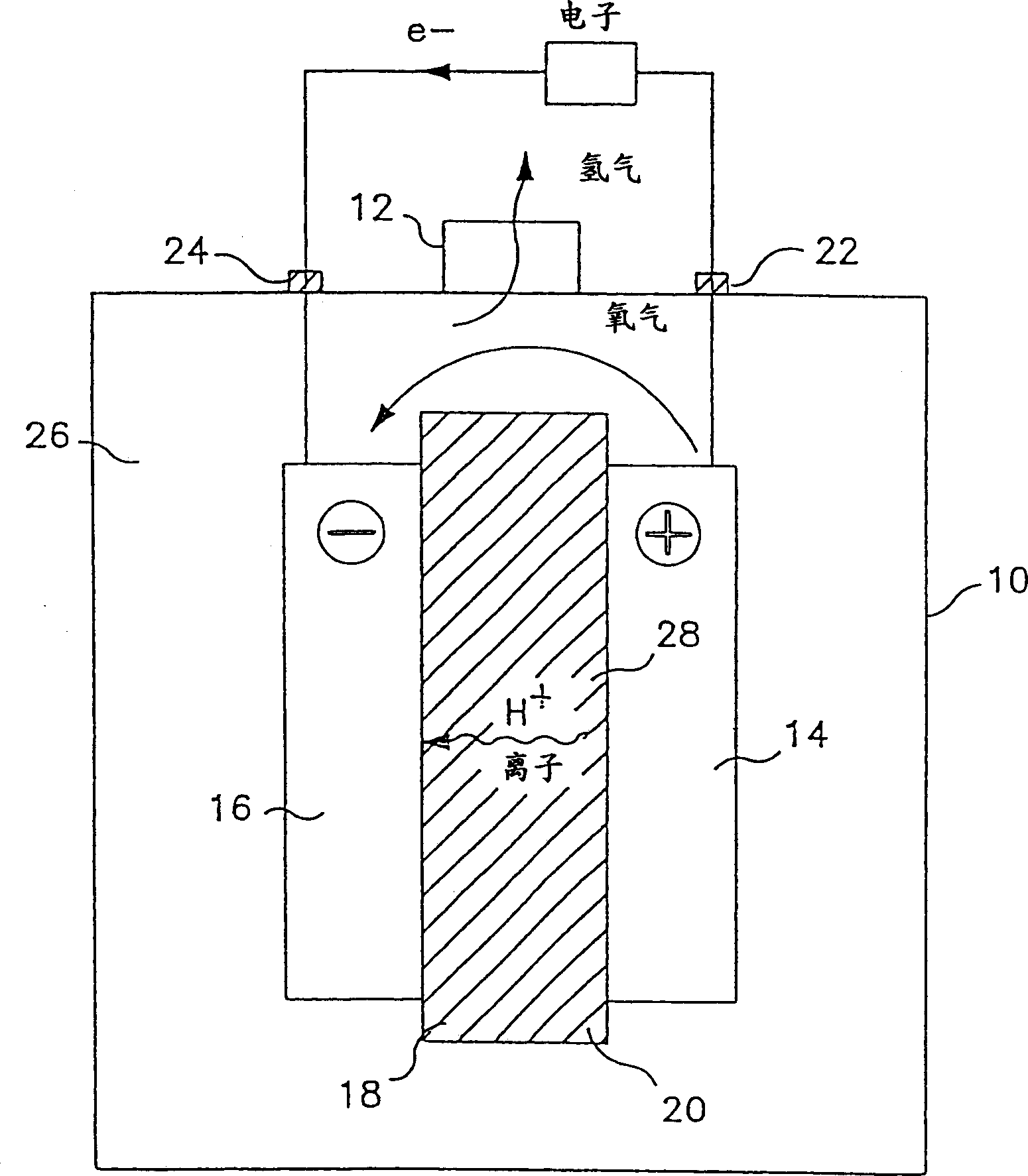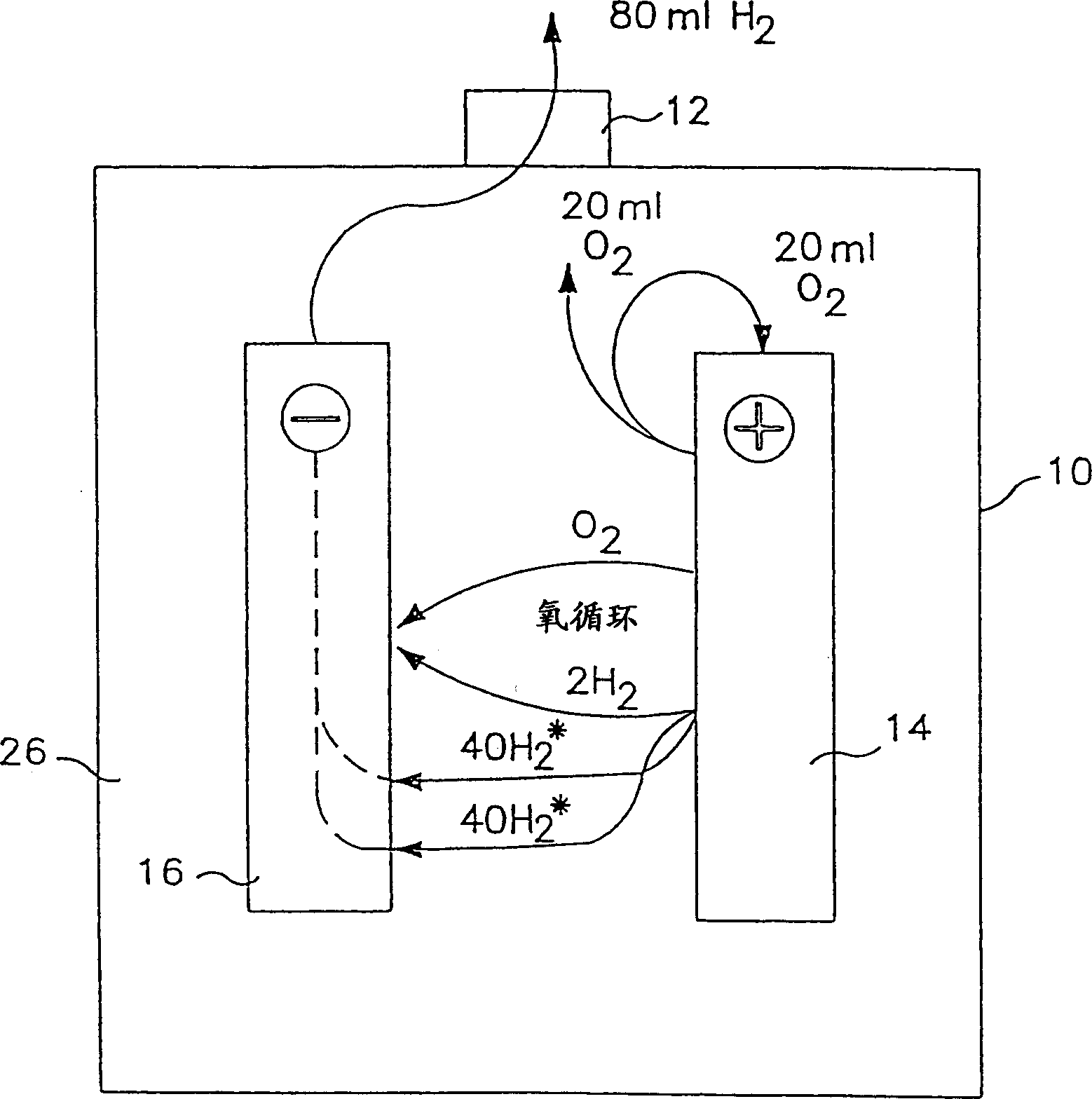Use of catalyst in standby valve-regulated lead acid cell
A catalyst and battery technology, applied in the direction of lead-acid batteries, secondary batteries, battery components, etc.
- Summary
- Abstract
- Description
- Claims
- Application Information
AI Technical Summary
Problems solved by technology
Method used
Image
Examples
Embodiment Construction
[0042] A. Use of Catalyst
[0043] see figure 1 , the VRLA battery of the present invention has a sealed casing 10 provided with a pressure relief (one-way) valve 12 . A positive electrode 14 having an active material is located within the housing 10 . A negative electrode 16 having an active material is also located within housing 10 and is spaced apart from the positive electrode. These electrodes are generally plate-shaped. An electrolyte-containing separator assembly 18 is sandwiched between the positive and negative electrodes and an electrolyte 20 is contained within the separator assembly. Virtually all of the electrolyte is contained within the separator assembly, there is no "free" electrolyte in the battery.
[0044] The most widely used VRLA batteries are considered to include the following: a positive electrode comprising a conductive material such as a lead alloy, preferably a lead-calcium alloy, and an active material consisting of PbO; a negative electrode c...
PUM
| Property | Measurement | Unit |
|---|---|---|
| Thickness | aaaaa | aaaaa |
| Outer diameter | aaaaa | aaaaa |
Abstract
Description
Claims
Application Information
 Login to View More
Login to View More - R&D
- Intellectual Property
- Life Sciences
- Materials
- Tech Scout
- Unparalleled Data Quality
- Higher Quality Content
- 60% Fewer Hallucinations
Browse by: Latest US Patents, China's latest patents, Technical Efficacy Thesaurus, Application Domain, Technology Topic, Popular Technical Reports.
© 2025 PatSnap. All rights reserved.Legal|Privacy policy|Modern Slavery Act Transparency Statement|Sitemap|About US| Contact US: help@patsnap.com



